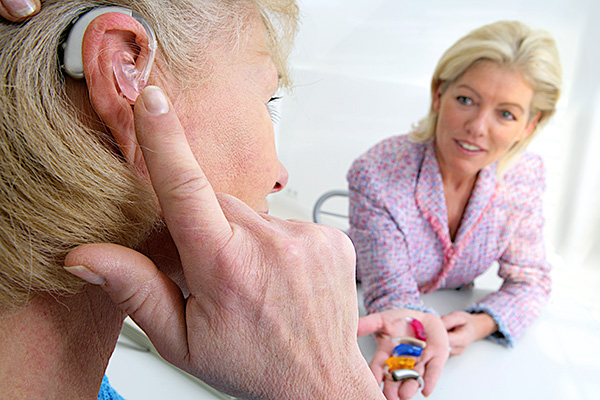
How Does a Hearing Aid Work?
Hearing aids are synonymous with hearing loss. We all know that they are frequently used to help those who suffer from hearing loss and we all have an idea of what they look like. But how do hearing aids actually work? And, how have they evolved with changing technology?
Parts of a hearing aid
Hearing aids are comprised of four basic parts: microphone, amplifier, speaker and power supply.
A microphone is what is needed to hear sounds. It picks up the sounds around you and, thanks to new technology, is better at catching sounds that are important rather than just background noise.
The microphone then converts sounds into an electric signal that is sent to the amplifier. This heightens the sound and makes it possible for those with hearing loss to hear more of their surroundings.
Once the amplifier gets the sound signals it then sends these messages to the speaker or receiver which in turn changes the signal back into sound. The speaker is in charge of moving the converted and increased volume of sound into your inner ear where it can process the meaning behind the noise.
To power everything in a hearing aid, batteries are needed. Different types and sizes of hearing aids require different types of batteries and these need to be replaced routinely in order to keep your hearing aid working at its best.
Digital hearing technology
Hearing aids are now digital, which means their capability and performance, has been greatly enhanced. Digital signal processing has enabled scientists and manufacturers to develop algorithms and updated software to make hearing aids work even better.
This means that even in noisy environments speech is understood more clearly and evenly. A person with hearing loss doesn’t have to worry as much about being out in public or surrounded by a noisy environment. Digital hearing aids are able to separate human speech from other background noise so that people who rely on them don’t have to strain as much to follow conversations.
Digital technology has also lessened the amount of feedback that can sometimes be heard with hearing aids. Most people can remember hearing a screeching sound coming from the hearing aid of their grandmother or grandfather. New technology has worked hard to eliminate this side effect.
Following a conversation is of the utmost importance to anyone and new, improved hearing aids better allow this to happen. Speech perception is enhanced and listening comfort is increased with the use of digital hearing aids.
Audiologists are increasingly aware of the vast differences in people that suffer from hearing loss. As a result, they have used the new digital technology to match individual hearing needs with specific instrument settings. Moreover, while it’s still important to be close to the source of a particular sound, digital technology enables those with hearing aids hear sound better that comes from all directions.
If you have a question regarding your hearing aids or if you think you may benefit from them, schedule an appointment with an audiologist in your area!

